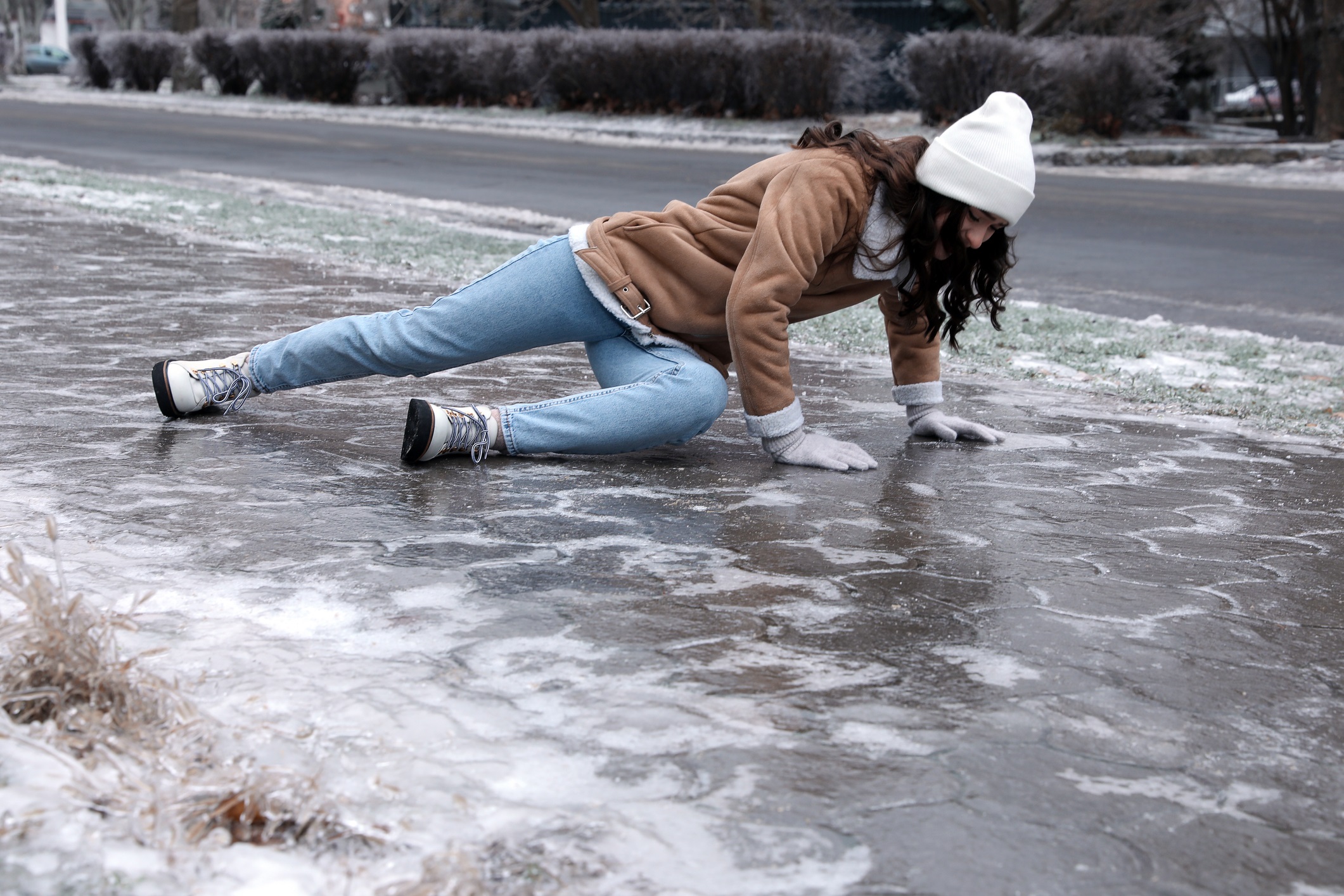
"Regarding low temperatures, I recommend being aware not only of the temperature, but also the winds, and wind chill. Dress appropriately and decrease time in the outdoors if able. Ultimately, you are trying to minimize skin exposure as much as you can,” Mark Lareau, RN, Emergency Department manager at Carle Eureka Hospital.
 At Carle Foundation Hospital Emergency Department it is common to see patients who have broken bones after falling on slippery surfaces in winter. “Do not try to do more than you really need to. The icy surfaces do not discriminate,” Holly Cook, MSN, RN, director of the Emergency Department said. “Plan ahead for things like how you will get your medication and do not go out unless you absolutely have to,” she said.
At Carle Foundation Hospital Emergency Department it is common to see patients who have broken bones after falling on slippery surfaces in winter. “Do not try to do more than you really need to. The icy surfaces do not discriminate,” Holly Cook, MSN, RN, director of the Emergency Department said. “Plan ahead for things like how you will get your medication and do not go out unless you absolutely have to,” she said.Carle Richland Memorial Hospital physician, Tanner Miller, MD, stresses giving extra thought to what you wear outdoors because it has a direct correlation to how your body reacts to the cold.

“People often choose clothing or shoes/boots that are too tight because they think it will improve insulation and keep them warmer, when it reality it increases the risk for frostbite in the extremities. Clothing that is too tight impedes circulation and therefore increases localized heat loss in those areas greatly increasing the risk for cold induced injury and frostbite,” he said.
Carle Hea
 lth Greater Peoria Vice President and Medical Director of Ambulatory Services, Stephanie Lindstrom, MD, said the first sign of frostbite is a burning sensation in your fingertips, nose or ears.
lth Greater Peoria Vice President and Medical Director of Ambulatory Services, Stephanie Lindstrom, MD, said the first sign of frostbite is a burning sensation in your fingertips, nose or ears.“Usually the distal extremities are the ones that are most vulnerable. If you can take a break from being outside to rewarm, that is important. The next stage is a numbing sensation, and unfortunately after that it becomes more of a risk for tissue damage. You'll get blisters, swelling or possibly irreparable damage to the tissue," she said.
Dr. Lindstrom said, "Only go out if you absolutely have to. If you do have to go out in sub-zero temperatures or blizzard-like conditions, make sure your car is prepared. Have a full tank of gas, have your cellphone handy and fully-charged, blankets in the car and a first-aid kit. Make sure you dress appropriately for the weather, even if you're only planning on being outside to and from your vehicle. It’s important to have waterproof outer layers so you can shed anything that becomes wet. Hats, gloves, boots, scarves so you can cover as much surface area
of the skin if you get caught outside."
Age can play a role in managing frigid temperatures as well.
"The cold can present much more of a problem in the very young and the elderly. For one, there is less thermoregulation in the body's capacity. The other issue is surface area-to-mass ratio for infants and young children. That becomes an issue with thermoregulation as well," Lindstrom said.
If you have concerns about hypothermia, frostbite or other conditions, contact your primary care provider or for immediate needs, the emergency department or convenient care location. You may find a location near you at Carle.org.
Categories: Staying Healthy, Community
Tags: Bloomington-Normal, Carle BroMenn Medical Center, Carle Eureka Hospital, Carle Foundation Hospital, Carle Richland Memorial Hospital, Champaign-Urbana, Methodist, Olney, Peoria, weather
